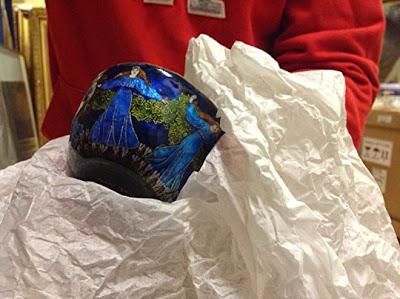
Fairies Trinket Bowl (1921)
Some of you might remember an exhibition on women artists, held at the Russell-Cotes in 2014. It was whilst finding objects for the show that Mr Walker (seen in red, above) found this glorious, luminous trinket bowl by an artist named Fanny Bunn. Well, that is just the best name ever. Not a great deal of information was available on Miss Bunn at the time and so I always intended to look deeper and see what I could find...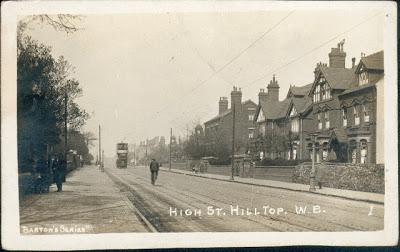
Hill Top, West Bromwich - Bunn country...
Miss Fanny Bunn was born in the autumn of 1870 in West Bromwich, Staffordshire. Her family was living at the time with her maternal grandfather, a grocer. The family was young, and Levi and Emma Bunn had managed to have two daughters within two years of their marriage. Levi's family business was coach-building, and his father Samuel had been a coachsmith before him. However in 1850 Samuel, who lived at Hill Top, West Bromwich, had been declared bankrupt, which might explain why they were living with Emma's parents. By later census returns it seems that Emma still served in her father's shop until her husband became comfortably off, financially speaking.
By 1881, Levi's occupation was listed as both book merchant and brass hinge maker. They had moved to their own home in Walsall Street, West Bromwich and they were one of the few families on the street who kept a servant, 16 year old Elizabeth Campion. Fanny and her slightly older sister Rebecca were at school, and when they left school, Fanny continued on to art school, to be specific the Birmingham Municipal School of Art.

The Legend of Sandalphon, the Angel of Prayer (1890-1900)
By 1891, the Bunn family fortunes were on a pretty even keel. They had moved to Beeches Road in West Bromwich, a very pleasant red-brick terrace of houses with gothic-arched windows. Levi Bunn was listed as a Liberal Council candidate in the 1890s. Fanny's work was winning awards - The Legend of Sandalphon was admitted to the National Art Competition at the Victoria and Albert Museum, where it was exhibited (this piece was stamped 'Examined South Kensington') from Birmingham. Sandalphon is an archangel responsible for protecting unborn children. The weeping angels either side of the archangel do raise some questions about Fanny's experiences of pregnancy as this is not a happy picture.
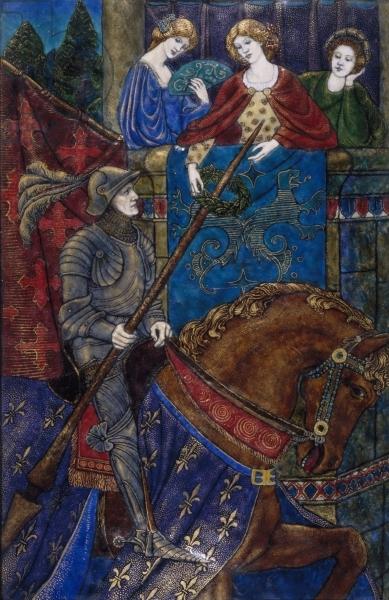
The Victor (1904)
In 1904 she won the Princess of Wales scholarship of £25 for her piece entitled The Victor, now in the collections of Birmingham Museum and Art Gallery. The enamel panel, reported in the London Daily News as 'well disposed, rich in colour' was somewhat dismissed by adding 'although the types of women looking down on the knight might have been more happily chosen.' Charming. However the Arts and Craft Magazine's coverage of the National Art Competition in 1904 praised her 'brilliant and harmonious' colouring of the scene and 'exquisite translucence of the enamels', lifting her work above the 'commonplace'.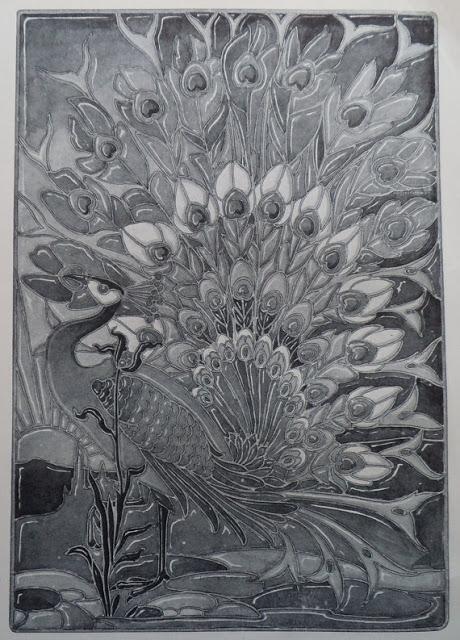
Design for a Peacock (1901)
Seemingly aware that her name was not exactly a glamorously artistic one, Fanny Bunn briefly took on the pseudonym 'Peacock', which was also the subject of her prize winning design for an enamelled decorative panel in 1901. She also won further awards, this time a gold medal and £25, for her enamelled panel of La Belle Dame Sans Merci, in 'rich tones of blue, violet and peacock' (as reported in East and South Devon Advertiser in 1902). This piece resides in the V&A, the very museum where it won the medal. The quality of her work and her prizes made her famous and brought her back to the Birmingham school as a teacher of enamelling in 1905.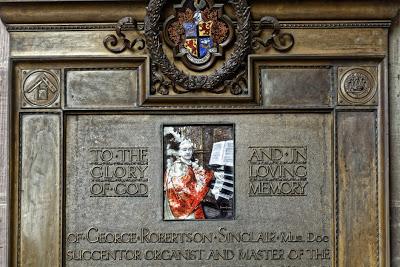
Enamelled portrait of George Robertson Sinclair, organist at Hereford Cathedral
Whilst most of Fanny's work is rarely on display these days, one piece is on constant show. Her enamelled portrait of the organist and musical director at Hereford Cathedral, George Robertson Sinclair (d.1917) is on the wall of the cathedral if you fancy seeing it. By 1911 census, Levi and his two daughters were still living at Beeches Road, Emma having died a decade before, just after the last census. Fanny was listed as an artist but neither Rebecca or Levi worked, and they had a young maid to take care of the family. The last that we know of Fanny's work is the Royal Birmingham Society of Artists Autumn Exhibition of 1921, where Case 2 in Gallery 3 held the trinket bowl entitled Fairies and a silver powder box Memory.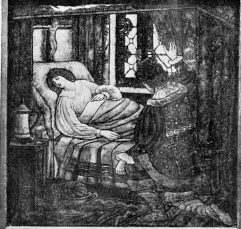
The Eve of St Agnes (no date)
That is all we know so far, although Fanny's Will from 1950 list more items which must be in someone's collection. She left everything to her sister, who outlived her by five years, and amongst the pieces listed are an enamel plaque entitled Gloria in Excelsis, a panel in grisaille (which means shades of grey), a tripych of The Nativity, a portrait in limoges of 'Miss Simms' and a full length watercolour portrait of Rebecca. So where are all these pieces? Over to you, my art detectives, do you know where any of these pieces are? Do you own a Fanny Bunn original? If so I'd love to hear from you! Much like Meave Doggett (who you might remember from this blog post) Fanny just fades from view after the early 1920s but I'm hoping that her work continued, and her pieces are just waiting to be gathered into a marvelous retrospective. Given how glorious the little trinket bowl is, that would be an amazing sight indeed...
